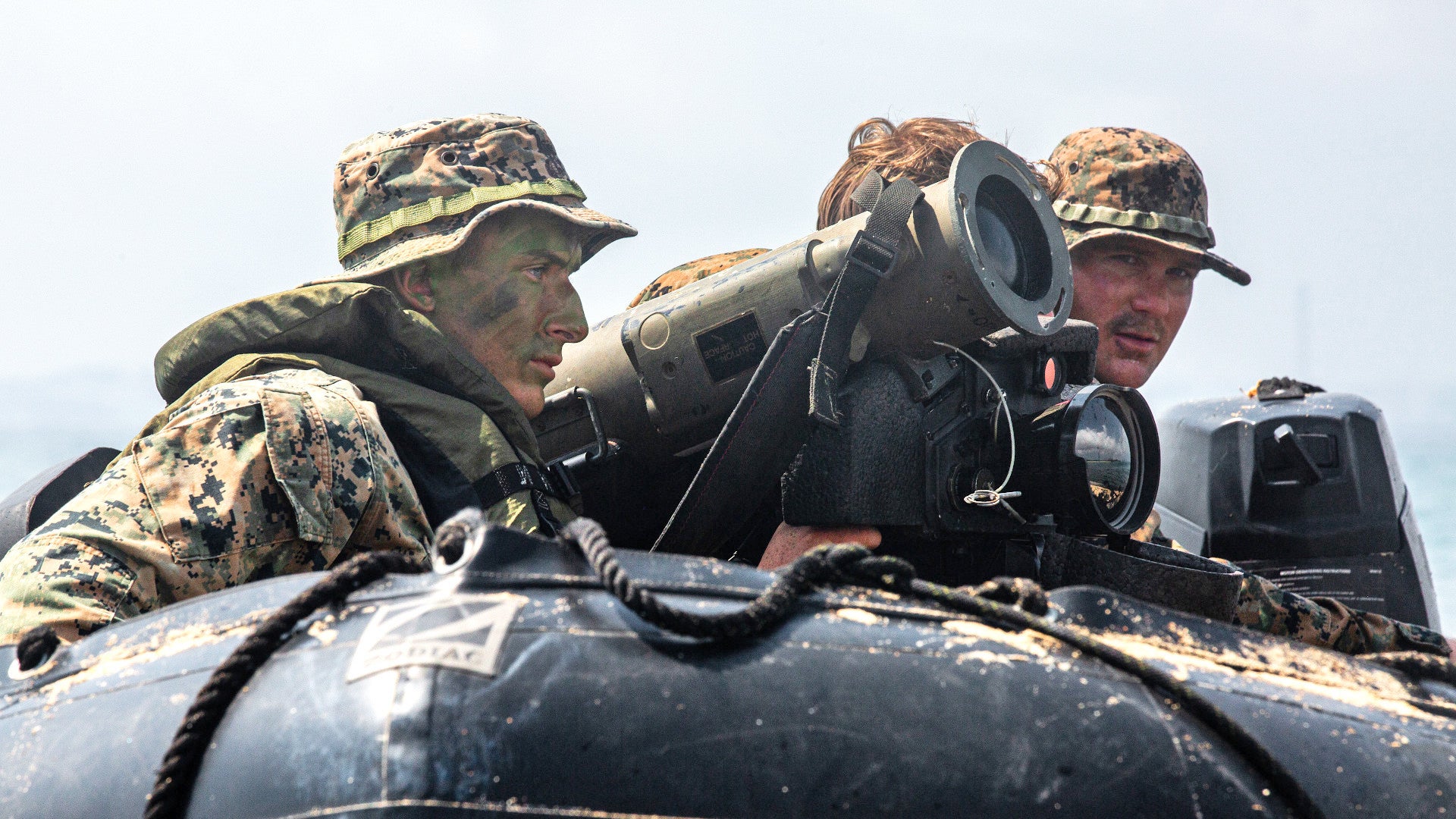Teams of Marines armed with Javelin anti-tank guided missiles riding in small inflatable boats trained to engage enemy naval forces for the first time as part of a major recent exercise on and around the Japanese island of Okinawa. The development of these waterborne tactics was influenced, in part, by lessons learned from responding to Somali pirates in the Gulf of Aden in the past two decades or so. This follows a smaller exercise earlier this year, in which Marine Corps forces in that same region practiced employing Stinger shoulder-fired surface-to-air missiles, also known as Man-Portable Air Defense Systems, or MANPADS, from rubber rafts.
The use of Javelin teams in small boats was a component of Exercise Castaway 21.1, which wrapped up on March 20, 2021. The main scenario centered on the establishment of a simulated Expeditionary Advance Base (EAB) on Japan’s Ie Shima island, which is situated less than five miles off the coast of Okinawa. Though led by the 3rd Marine Division, which is forward-deployed in Japan, other Marine units, as well as Air Force and Army elements, including special operations forces, also took part in Castaway 21.1. The main task for the Marines in small boats was “littoral defense,” consisting mainly of keeping watch for any attempts by enemy naval forces to land on Ie Shima and uproot the EAB and being positioned to help respond to any attacks.
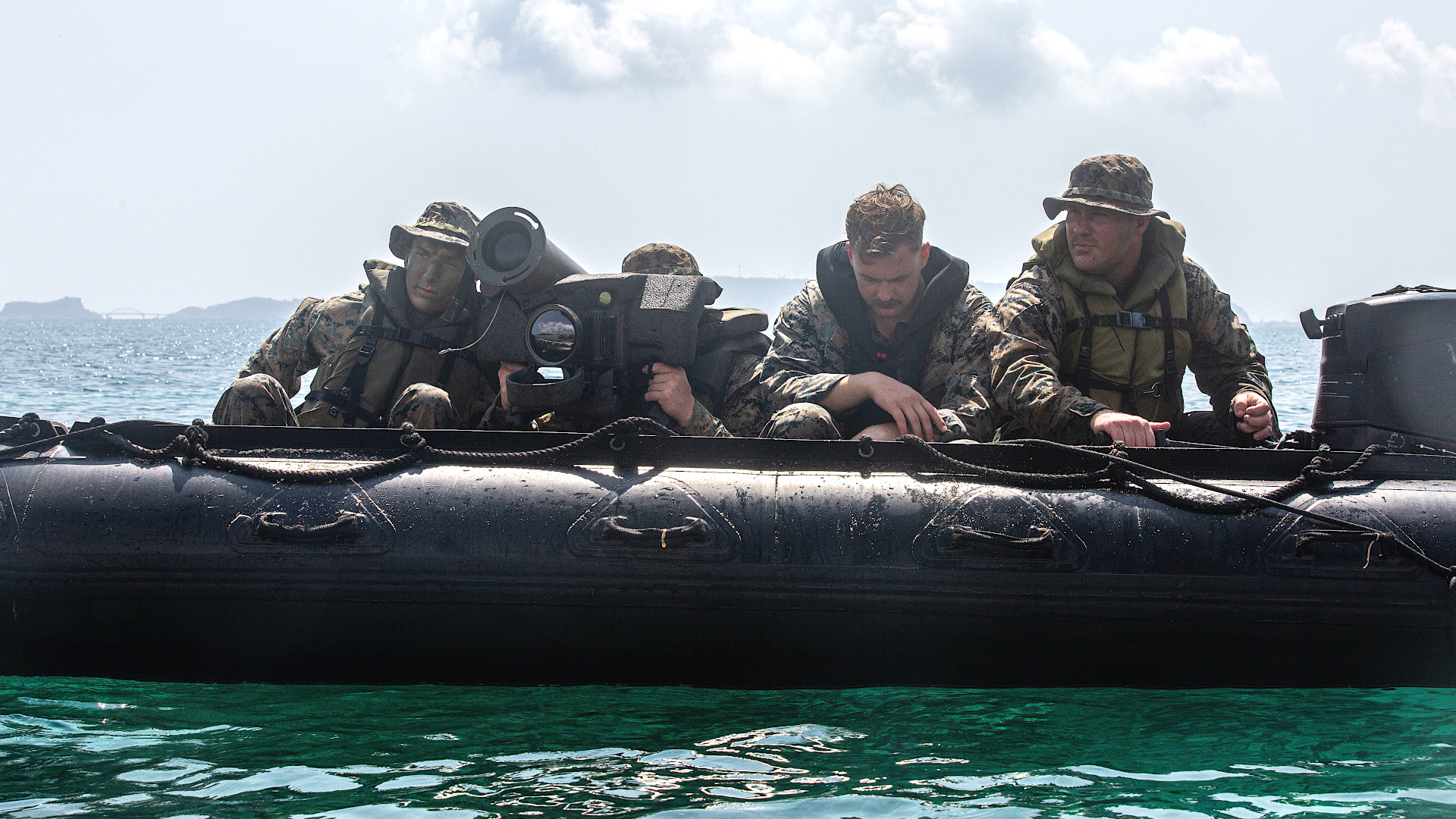
“The guy on the offense gets to choose where he lands, right?” Marine Captain Jonathan Kohler, a company commander with 3rd Battalion, 3rd Marine Regiment, who was in charge of the littoral defense operations, told The War Zone in an interview from Japan. “So, this gives us the ability to kind of react to wherever that happens.”
“Boats are kind of like a waterborne observation post,” he continued. “They give us a lot of push farther out, really over the horizon is what they’re able to see. I can see where a ship is or what it’s doing.”
The current type of small inflatable rubber boat, which is propelled by an outboard motor, that the Marine Corps operates has a v-shaped hull that makes it better able to operate further from shore compared to earlier flat-bottom types. “It gives us a little more range in the water, like 20 to 30 nautical miles on it, and it’s a much smoother ride for the guys in the boat,” Captain Kohler explained.
When it comes to putting Javelin teams in those boats, “there are no concerns with firing” them on the water, Marine Captain Nicholas Royer, a spokesperson for 3rd Marine Division, also told The War Zone. “It’s a recoilless weapon so the accuracy won’t be significantly impacted, and the boat itself is small and low-profile, so ensuring the backblast area is over the water and not the boat is easy. The safety aspect of it is actually easier than firing it on land as we don’t need to worry about things being kicked up by the backblast, even, although we’ve fired them from a number of ground platforms and on foot without incident.”
Javelins can be employed in one of two modes of operation, a direct fire option and another that sees the missile execute a pop-up maneuver before it dives onto its target. Against tanks and other heavy armored vehicles, the latter mode is particularly useful since it sends the weapon into the top of the vehicle in question, which is typically very vulnerable, even on types with advanced defenses, such as active protection systems. That method of attack can also be used to engage threats behind cover. The entire weapon system, which you can read about in more detail in this past War Zone piece, includes a reusable Command Launch Unit (CLU) that has a thermal imaging system capable of 12x magnification, giving it a valuable secondary surveillance capability.
The video below gives a general look at the Javelin’s modes of operation.

However, during Castaway 21.1, the concept of operations envisioned the boat-borne Javelins being used against maritime threats to the EAB, rather than those on land. “I think the main thing would be targeting ship-to-shore connectors,” Captain Kohler said, referring to things like landing craft and amphibious vehicles ferrying troops from larger vessels to the beach. “So, after they offload of the main [amphibious] ship, kind of interdicting those landing craft as they come ashore.”
The Marines are not the only ones to have explored the use of anti-tank guided missiles against landing craft and other similarly-sized maritime threats. Finland, for instance, has dedicated coastal defense units armed with Spike-ER missiles from German firm Eurospike, which produces multiple variants of this Israeli-designed weapons family. In Finnish Defense Forces service, the Spike-ER is actually known as the Rannikko-ohjus 2006 (RO2006), or Coastal Defense Missile 2006.
Putting those teams in small boats, rather than in positions ashore, is a more novel application of this concept. It’s also one that the Marine Corps sees as being applicable to offensive, as well as defensive operations, as part of the service’s new Expeditionary Advance Base Operations (EABO) concept of distributed operations, which you can read more about in detail in this previous War Zone story.
At its core, EABO involves planning to have relatively small groups of Marines quickly establishing bases of operation in forward areas, especially small islands. This distributed concept of operations also envisions them being able to then rapidly reposition themselves, as necessary. The general idea is to use these flexible, responsive ground forces to help control littoral areas, and even surrounding “seaspaces,” to deter opponents in situations short of an actual conflict, and then, if that fails, be well-positioned to engage enemy forces.
“We’re not just going to take and hold the island, but looking beyond the island to the seaspace,” Captain Royer said. “That’s what a lot of these small boat type operations let us do.”
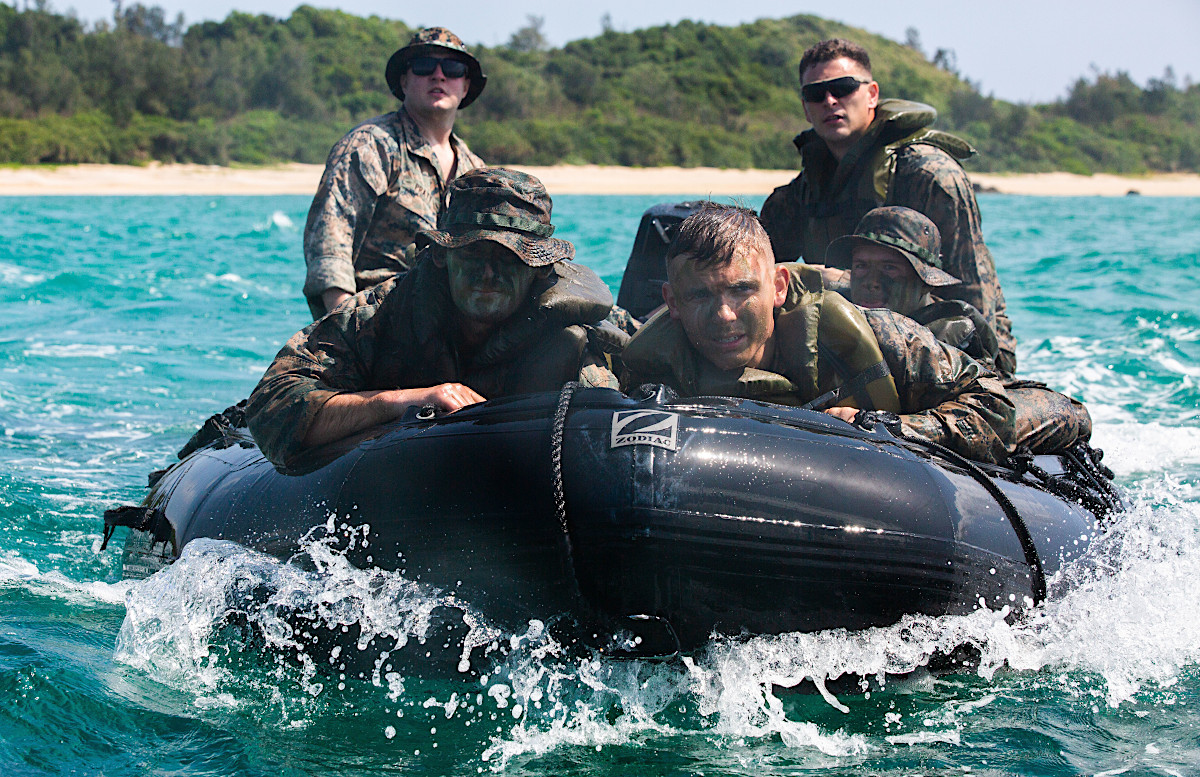
“If it’s just transport ships, they’re most vulnerable when they’re loading troops,” Captain Kohler added. “That’s a time when Javelins can be used against the actual ship, even targeting helicopters sitting on the deck of a ship.”
That latter notional scenario is very interesting to envision given the notable employment of anti-tank guided missiles against helicopters, on the ground and in flight, as well as other targets beyond armored vehicles, in various conflicts around the world in recent years. This tactic has been used to particular effect by rebel groups in Syria opposed to dictator Bashar Al Assad.
“Think of like Somali pirates, but better armed,” Captain Kohler added. For years, pirate groups operating from Somalia routinely attacked very large commercial vessels from small skiffs using various small arms, including rocket-propelled grenades. Counter-piracy efforts have significantly curtailed, but not eliminated such criminal activity in that region.

Experiences from Millennium Challenge, a controversial exercise that the now-defunct U.S. Joint Forces Command (JFCOM) conducted in 2002, have also had an important impact in the Marine Corps’ thinking about small boats, Captain Kohler said. As far back as 2017, the Marine Corps had also publicly highlighted a desire to make greater use of “itty bitty boats,” especially in future distributed operations.
Small boats, in general, offer a valuable and discreet means of getting around, especially at night, enabling hit-and-run-type raids, as well as more sustained operations, in littoral environments. “Simplicity is the advantage. They’re hard to spot, quick to set up, quick to operate, you can easily train someone to operate them,” Captain Royer said.
“It allows us to kind of exist behind enemy lines, on small islands especially,” according to Captain Kohler. “So, I can be moving around a lot and not just limited to one small piece of terrain. I can bounce island to island in the middle of the night.”
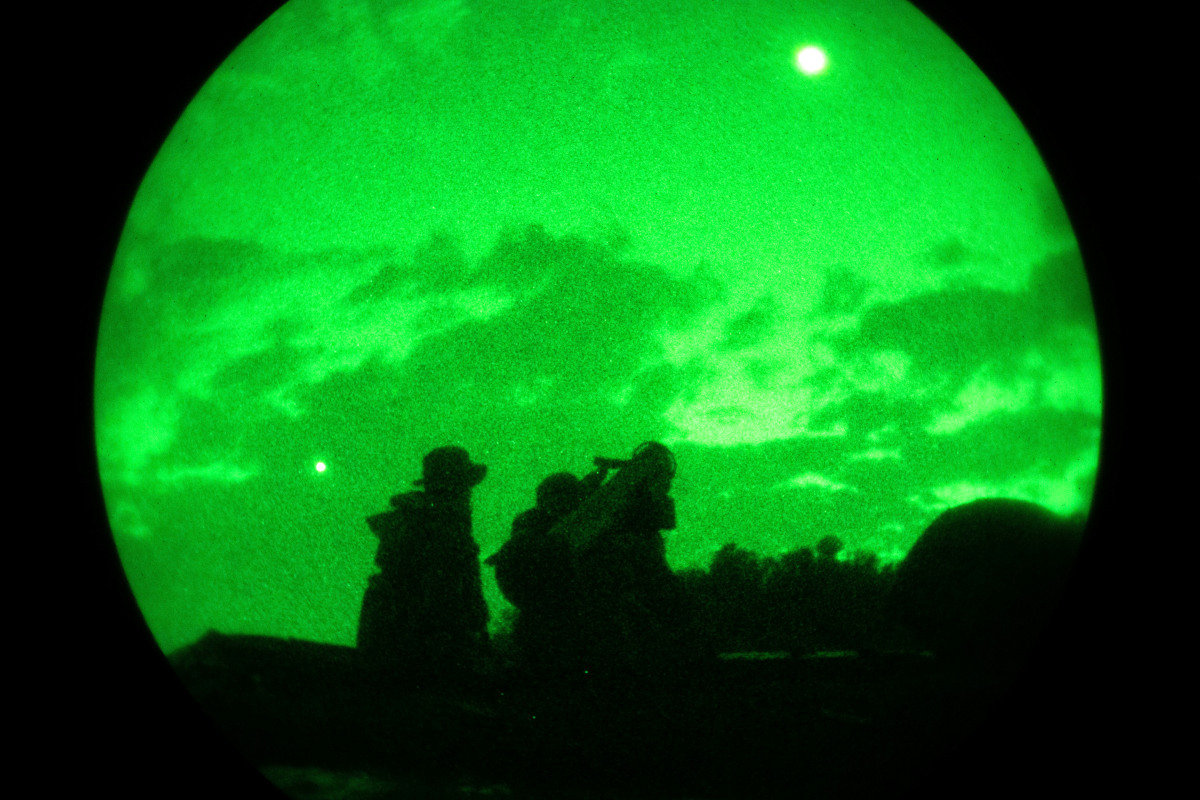
“You can fit these on a helicopter, right?” he continued. “You can land somewhere and push a couple off the back and leave some Marines for really an extended period of time.”
“We’re not going to be beholden to having to have your larger, more traditional kind of shipping to get somewhere,” Captain Royer noted. In 2019, the Marine Corps first revealed its intention to get away from its reliance on traditional amphibious warfare ships and the service is now working with the Navy on the acquisition of at least one new class of lighter vessel, the Light Amphibious Warship (LAW), to support its future operational plans.
When it comes to attacking larger ships with small boat swarms, Captain Kohler acknowledged that “it would be difficult if they have naval escorts, to kind of punch through that.”
Still, “at the end of the day, it’s a lot harder to see some of Marines in a boat with a Javelin coming than it is to see destroyer coming your way,” Captain Royer pointed out. “And you can definitely field a lot more of those boat teams with a lot more Javelins.”
Issues surrounding the survivability of small boat teams when targeting larger, more traditional naval assets would not necessarily preclude the Marine Corps from employing swarms of small boats with Javelins, as well as other weapons, as part of a larger EABO campaign. Operations against any opponent, including near-peer competitors, would include many tiers of long-range strike and other capabilities applied in various contexts, not all of which would necessarily be high-risk. Castaway 21.1 itself included High Mobility Artillery Rocket Systems (HIMARS), TOW anti-tank missile-armed 4×4 Joint Light Tactical Vehicles, and other light forces using all-terrain vehicles and motorcycles, among other things, all contributing to the complete littoral defense picture, as well as other tasks.
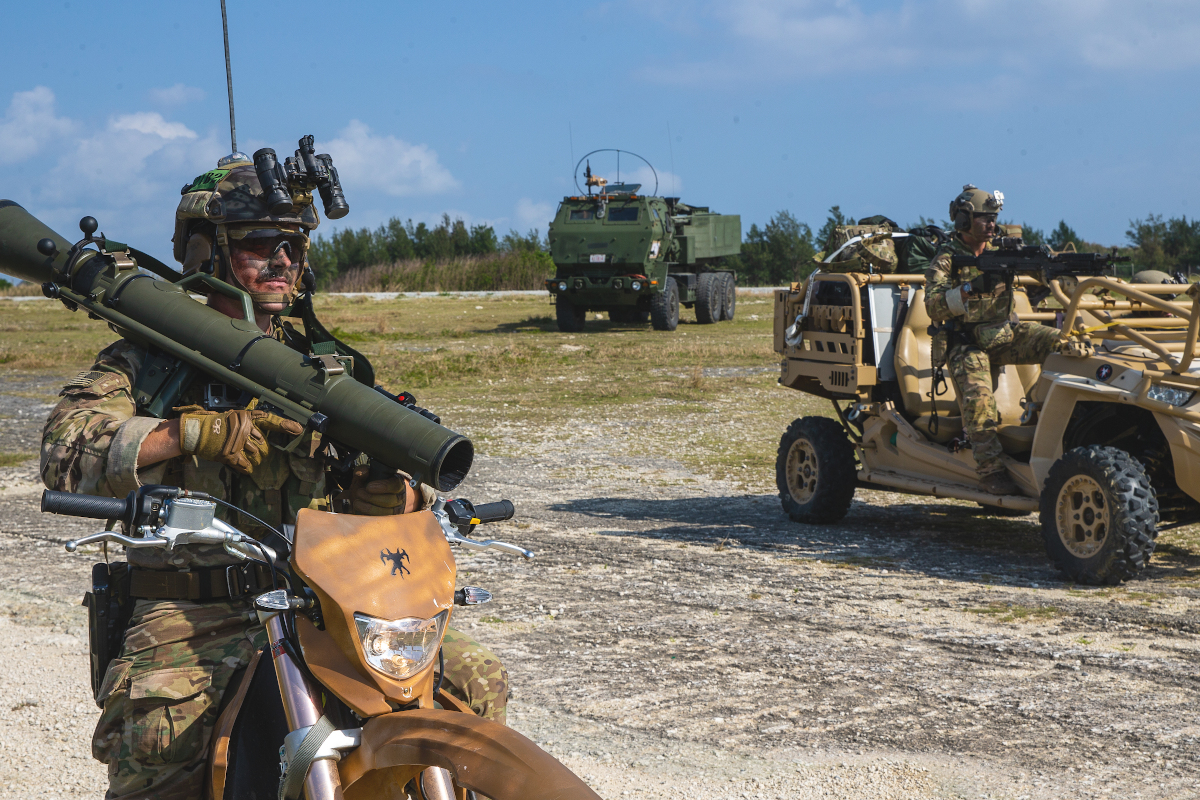
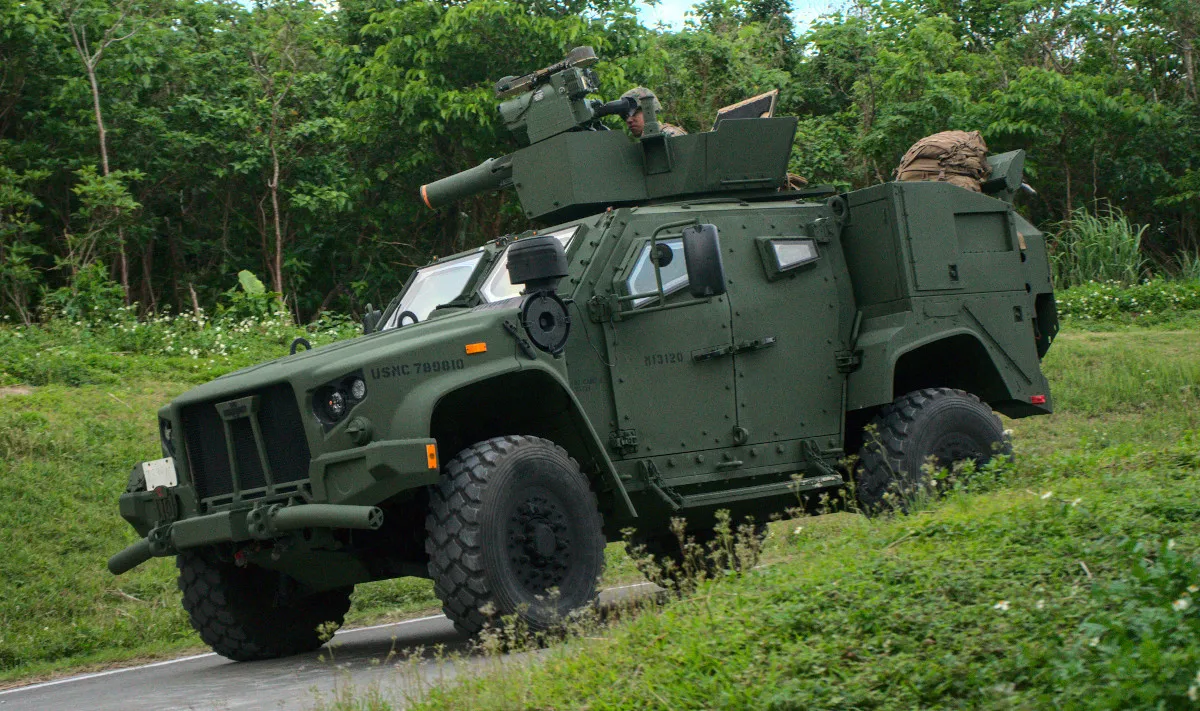
Marines also demonstrated an ability to engage maritime targets using mortars and Captain Royer explained that the Corps was looking to eventually employ that capability from amphibious ships, as well. Of course, unguided mortar rounds would be of more limited utility against faster-moving threats at sea, whether they were engaging them from the shore or afloat. The Marines, among others, have been looking into precision-guided mortar rounds over the years, which would definitely help make this particular tactic more effective.
All of this is “letting us set up the bubble of observation and fires well in excess of what you might traditionally think of a company or platoon-level outfit is able to create and influencing a much broader seaspace around a piece of land, which obviously opens up some interesting possibilities with coordinating with the Navy to determine where we might want to funnel an adversary or where we want to deny the adversary freedom of movement,” Captain Royer told us, talking more broadly about the concepts explored during Castaway 21.1. “A lot of this capability allows us to create that denial in a way this very very compressed time scale, low-notice, and very low signature, as well.”
“We’ve got a lot of things for your lower-intensity, counter-insurgency-type fights and we have a lot of things for your sort of very high-end, peer-peer competitor-type fights,” Captain Royer added. “Some of the stuff we’re experimenting with here today gives us the opportunity to work in kind of that wide spectrum in between, whether that’s still smaller vessels that don’t rise to the level of the formal navy being used in an offensive capacity by an adversary.”
That latter point is especially important given that many potential adversaries now employ forces that are commonly referred to as occupying a “gray zone” that exists outside of an outright conflict. Good examples of this are the small boat fleets that Iran, as well as its proxies in the Middle East possess, which are capable of conducting swarming operations or engaging in missions that are virtually indistinct from terrorist attacks. China’s Maritime Militia, a paramilitary force of fishing boats that is often employed to harass foreign commercials interests as a sideshow to various maritime boundary disputes, particularly in the South China Sea, also fits into this category of malign activity. In a new tri-service naval strategy released earlier this year, the Navy, the Marine Corps, and the Coast Guard highlighted how they expect monitoring and documenting incidents short of an outright war to be a major component of routine operations in the future.

Modified commercial or commercial-type vessels are also often used by many countries for intelligence gathering and the insertion or extraction of special operations forces or intelligence operatives. “I’ve got snipers in a maritime hide site, basically observing what fishing boats are going out, when are they going out, how can I discern in those patterns that may tip me off for something happening,” Captain Kohler added while talking about the more general aspects of the Castaway 21.1 exercise.
Captain Kohler and Captain Royer both stressed that the kinds of small boat concepts of operation that the Marine Corps is exploring now would be applicable outside of the Asia-Pacific region and potential conflicts there, especially with China, which the Pentagon says is presently the “pacing threat” for overarching defense planning decisions. “I can think of many pieces of terrain in Europe, near Turkey, in different places” Captain Kohler said. “There’s small islands everywhere, right?”
“The ability to reach difficult places on short notice, that could be useful in a humanitarian situation, that could be useful in counter-piracy, counter-terrorism,” Captain Royer added.
How future Marine Corps small boat operations continue to evolve in the near term very much remains to be seen, as well. Captain Kohler explained that the Marine Corps was looking at new boat capabilities, “definitely larger than what we’ve got,” as part of the development of its new Marine Littoral Regiment force structure plans, which are part of a larger, radical redesign of the Marine Corps structure, as a whole. You can read more about those plans, known as Force Design 2030, in this past War Zone piece.
It’s interesting to note that Marines conducting a separate exercise in the Philippine Sea in February conducted the first-ever launches of Stinger missiles from Navy Mk VI patrol boats. That comes amid indications that service is looking to divest all of those boats in the very near future, a story The War Zone broke. It’s possible that, if the Navy’s plans go ahead, the Mk VIs could be transferred to the Marine Corps to support its expanding use of small boats.
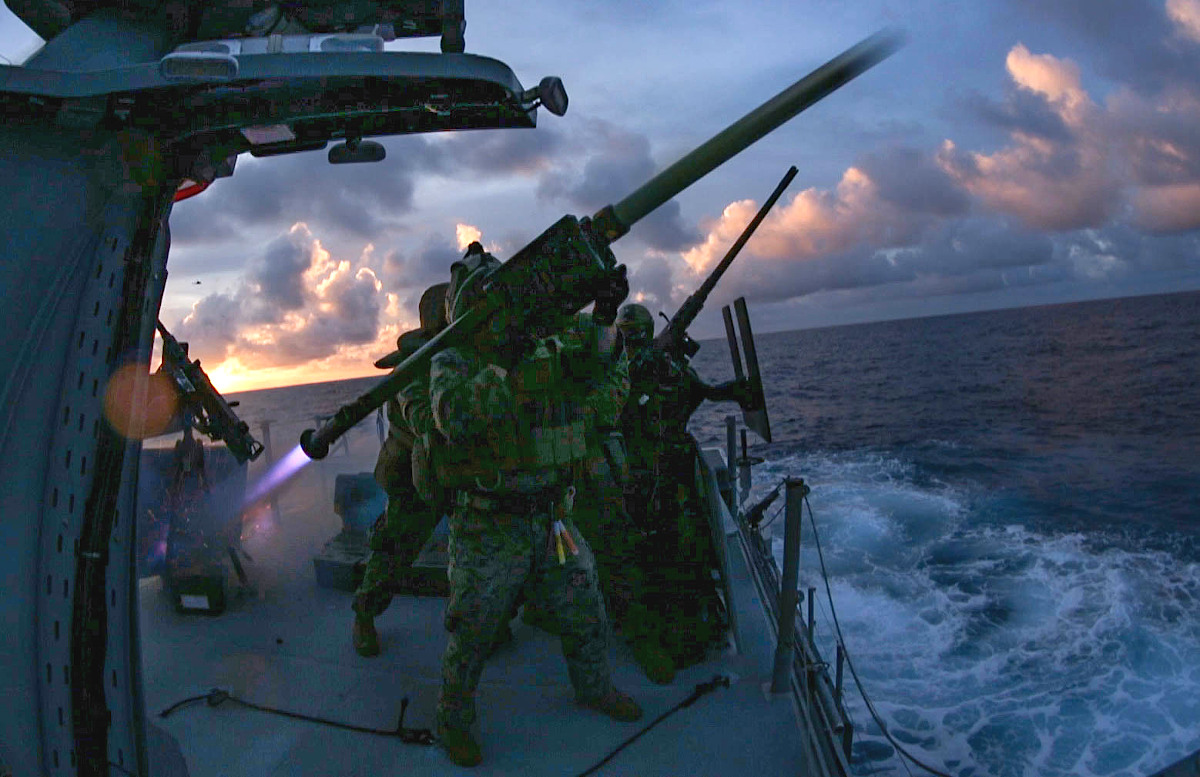
In the meantime, the Marines are pushing ahead with their development of new small boat tactics, techniques, and procedures, as well as other capabilities to support future distributed operations. “It’s about innovating with what we have available and kind of looking to some of the future capabilities we might get and laying the groundwork now,” Captain Royer said. “We’re not waiting for technology to catch up with our ideas.”
It’s all about developing “a more flexible, scalable force with a mix of very old concepts that we’re revamping and then new stuff,” he added. Small boats, carrying teams armed with Javelin missiles and more, look set to only be an increasingly important part of that force mix going forward.
Contact the author: joe@thedrive.com
